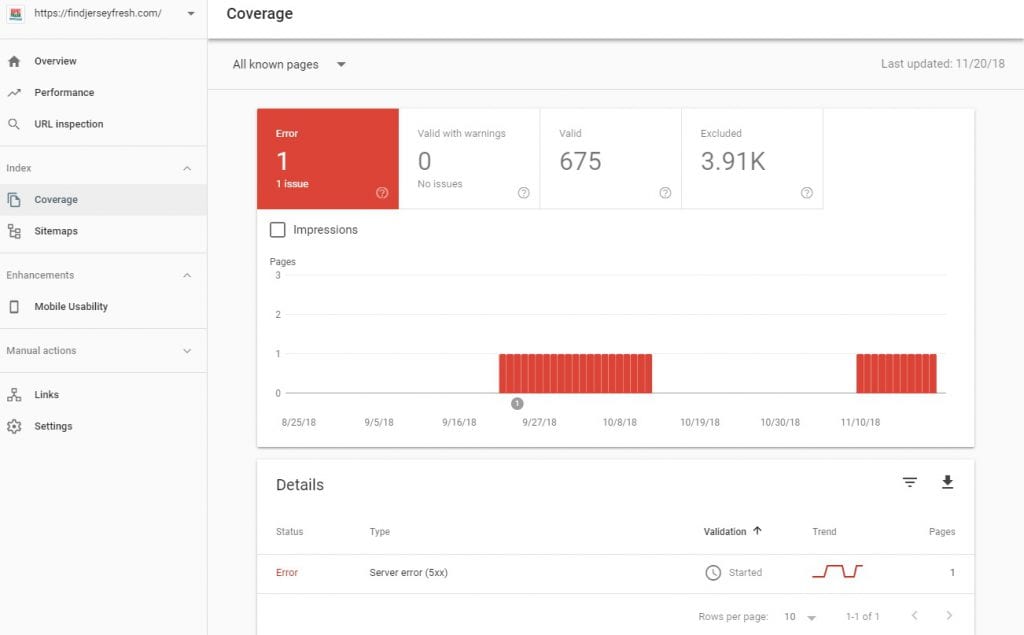It lays out exactly what you need to know. The process for an SEO audit, the specific steps and data points to look to improve your website's organic traffic and ranking in the search engine results pages (SERPs).
Most SEO audits are too technical and hard to decipher, we get it. Sometimes they are manually created and compiled- that would only make sense if there wasn't an SEO checker like Running SEO around.
Once complete– you’ll be in a much better place to kickstart your growth and conduct important next steps.
- A website that is publicly-accessible
- Google Sheets, Excel, or another spreadsheet tool (for tracking errors)
- Search Console (for seeing if Google has identified issues for you)
- Running SEO (for running a representative crawl of your pages and identifying issues automatically)
- The goal here is to know what your goals are for long-term growth that will be achievable through SEO for your business.
- SEO is something that you use to get to growing your business, and you should think of it as a road to growth and not a means to an end.
- Your strategic goals, if you don't know what they are, can be identified by following the S.M.A.R.T. framework.
Are your business and website goals Specific?
Are they Measurable?
Are they Relevant?
Are they Time-bound?
To add an additional layer on top of the SMART framework, the expert web design and SEO experts at Key Medium have added additional steps to the framework to make it SMARTER. These are:
A solid optimization plan requires constant tending to through a nonlinear, agile-like process. If you need help with this or any strategic process, we urge you to connect an SEO expert to ensure maximum likeness of success.
Let’s move on to the nitty-gritty part of your audit to optimize your site to gain rank and organic traffic.
We created the Running SEO checker to help here, for free. We were bothered by the expensive tools on the market and this led to the creation of this site and optimization resource. Simply run our automated analysis tool to get started.
The first piece of this would be to have your publicly-accessible website link handy.
Then, use crawl your site and take a representative sample of interior pages, not just your homepage.
You want to check the Google Index status in Index > Coverage for errors such as usability issues and crawl errors. (opens in a new tab)">Google Search Console > Index > Coverage for errors such as usability issues and crawl errors.

If you couldn't find that in Google Search Console, don't fret. There's another method you can use.
Simply navigate to google.com and type in site:yourdomain.com to see what google sees in your index.
This is also pulled as a data point in your Running SEO Audit report, so you can skip this part if you'd like.
Not seeing your website crawled in Google's inde? Not showing up in the search results? Your site may not yet have been crawled and indexed if it's new. If it's been around for over a month, then the issue is likely that your website is not crawlable.
Is your site not crawlable? You can start by identifying opening up the robots.txt in your root folder (if it exits) and also check your website to see if a robots meta tag exists. Then, determine whether or note you're telling google not to index your site.
Compile a list of issues in a website issue log. If you don't have one yet, go ahead and create your first website issue log with the following columns:
In your newly created website issue tracker, also include the following critical and strategic pieces of information and weigh them by priority for maximum results and efficacy:
If your SEO score was disappointing, don’t fret. In fact, it’s a common problem. So many businesses with top-rated products and services have difficulty gaining new customers online simply because their website isn’t primed for people to find them.
The best way to boost your search rankings? Hire a professional to conduct an SEO audit and spend your time and effort being awesome at your running your business and engaging with clientele.
Next steps involve more tactical SEO and business activities such as keyword research, an in-depth content audit/inventory, and competitor analysis, and preparation of an action plan that will help you gain more organic traffic for your site.
This SEO audit guide was written by Ali Jaffar, Founder and Lead Developer at Key Medium - a Premier Philadelphia SEO Agency.
You can hire a professional SEO firm to conduct an SEO audit at any time and in any capacity. For the best results, the more love your website SEO needs, the more you should consider investing in a website redesign or a whole new website built with SEO in mind from the start. Key Medium can conduct a thorough technical website and SEO audit and walk you through recommendations to develop an action plan customized to your business goals, needs, and budget.